Transurethral Resection of the Prostate (TURP) for Benign Prostatic Hyperplasia (BPH) Treatment in Germany
Treatment prices are regulated by national law of the corresponding countries, but can also include additional hospital coefficients. In order to receive the individual cost calculation, please send us the request and medical records.
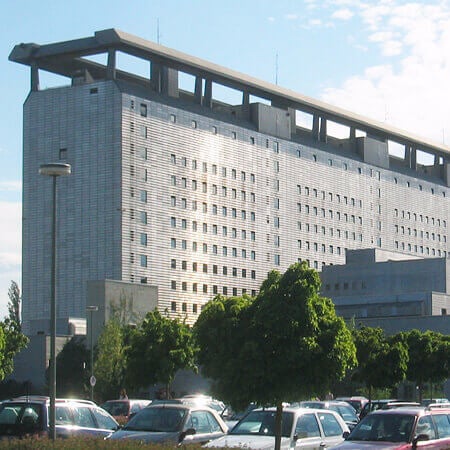
Department of Adult and Pediatric Urology, Andrology
The Department of Adult and Pediatric Urology, Andrology offers the full range of services in the areas of its specialization. Men and boys with diseases of the reproductive system can be diagnosed and treated in the medical facility. Doctors also treat infertility and erectile dysfunction. Medical care is provided to men and women with diseases of the urinary system, namely kidneys, ureters, bladder, and urethra. The department is certified as the Prostate Cancer Center by the German Cancer Society (DKG), which indicates the excellent quality of the services provided in this area. The department's urologists have a perfect command of the innovative treatment methods, including holmium laser enucleation of the prostate (HoLEP), photodynamic therapy, and da Vinci robot-assisted surgery. The department employs comprehensively trained and experienced doctors who apply advanced medical achievements in their practice. Each patient is provided with an individual approach, considering their specific needs and wishes.
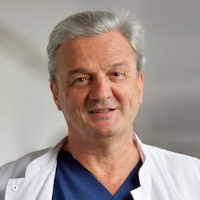





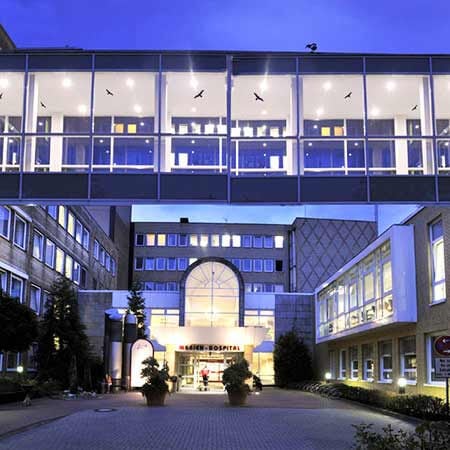
Department of Adult and Pediatric Urology, Andrology
The Department of Adult and Pediatric Urology, Andrology offers the full range of diagnostic and therapeutic services for patients with diseases of the urinary system and for men with pathologies of the reproductive system. The team at the medical facility also admits children and adolescents with urologic diseases. The department has 62 beds for inpatient treatment. Therapeutic options include both conservative and surgical techniques. Many operations are performed using the innovative da Vinci surgical system. The department also successfully uses modern laser systems, including the GreenLight laser, a holmium laser, a thulium laser and the laser for water vapor thermal therapy. The key focus of the department's work is on cancer surgery for malignant diseases of the prostate, bladder, kidneys, and testicles. The department also specializes in the treatment of urinary incontinence and pediatric urologic pathologies. Prostate diseases are treated in a specialized center certified in accordance with the DIN EN ISO 9001 requirements.
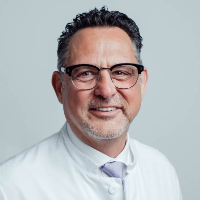



Department of Adult and Pediatric Urology
The Department of Adult and Pediatric Urology provides high-precision diagnostic examinations and effective treatment for diseases of the genitourinary system and reproductive system in men and boys. Of particular interest is drug therapy and surgical treatment of prostate, bladder, kidney, testicular, and penile cancers. The department is part of the Comprehensive Cancer Center Ulm (CCCU). For the patient, this means that their clinical case is studied by a multidisciplinary tumor board, which determines the optimal treatment tactics. The department is also certified by the German Cancer Society (DKG), so all therapeutic procedures meet strict national and international standards. The department's team of urologists also has unique clinical experience in the minimally invasive treatment of kidney stone disease, benign prostatic hyperplasia, neuro-urological dysfunction, and all urologic diseases in children. During the surgical treatment, the specialists at the medical facility successfully use minimally traumatic surgical techniques. They perform endoscopic, laser, minimally invasive, and robot-assisted surgery using the innovative Da Vinci system. The department treats about 3,000 inpatients and 9,000 outpatients with clinical cases of varying complexity annually. The number of surgical procedures performed and treatment outcomes are regularly published by the authorized commission of the Initiative Quality in Medicine (IQM).
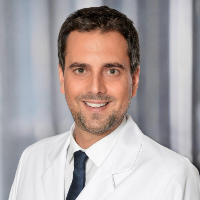





Benign prostatic hyperplasia (BPH) is one of the most common diseases in urology. The prevalence of this pathology increases with age: from 10% in the 40-49 age group to 80% in patients over the age of 80.
This condition is characterized by benign hyperplasia (overgrowth) of prostatic tissue with a significant increase in the volume of the prostate gland. As a result, benign prostatic hyperplasia (BPH) leads to symptoms and complications of the urinary system due to compression and irritation of the urinary tract.
Their elimination requires partial or total removal of the prostate, which can be done through a transurethral approach without any abdominal incisions. You can undergo minimally invasive treatment in Germany. You are welcome to use the Booking Health service to find out the cost of treatment and make an appointment for your treatment on your preferred dates.
Content
- What is prostate TURP for BPH?
- Who may be a candidate for prostate TURP for BPH?
- Types of prostate TURPs for BPH
- Results of prostate TURP for BPH
- Benefits of transurethral resection for benign prostatic hyperplasia
- Where can I have TURP treatment for benign prostatic hyperplasia?
TURP is a surgical procedure for BPH treatment where excess prostate tissue is removed through the urethra to improve urinary flow.
Advantages of TURP in Germany include advanced technology, experienced surgeons, and high success rates in treating BPH symptoms.
Alternatives to TURP include medications, minimally invasive procedures like laser therapy, TUNA, TUMT, and other treatment options, depending on individual cases.
Germany offers state-of-the-art hospitals, expert urologists, and comprehensive care, making it a preferred destination for BPH treatment.
Hospital stay for TURP in Germany typically lasts 2-4 days, with pre-operative assessments, the procedure, and post-operative care provided.
The cost of surgery in Germany varies, including surgery costs, hospital pricing, and follow-up care. Treatment expenses depend on the specific hospital and treatment plan.
Yes, international patients can undergo TURP in Germany. Medical tourism company Booking Health assists with arrangements and organizational issues.
What is prostate TURP for BPH?
Transurethral resection of the prostate (TURP, TUR of the prostate) is a procedure to remove prostatic tissue using an electrode through an endoscopic approach: through the urethra and bladder. It is a minimally invasive surgical procedure with a short recovery time.
TURP is the standard treatment of benign prostatic hyperplasia in most hospitals worldwide. It is the world's first endoscopic surgery and has been used in urology since 1943. It is used for the treatment of several prostate diseases, including benign prostatic hyperplasia (BPH), abscesses, and benign prostatic tumors.
Who may be a candidate for prostate TURP for BPH?
The therapeutic potential of the procedure is limited only by the duration of the transurethral resection surgery. It should not exceed 60 minutes to minimize the risk of complications associated with the absorption of irrigation fluids. Thus, the volume of the prostate can be reduced by as much as the doctor can remove in an hour.
The upper limit of prostate volume at which a patient can have prostate TURP varies from hospital to hospital:
- In standard cases, transurethral resection of the prostate is performed when the prostate volume is between 30 and 80 ml
- In specialized urology centers with experienced specialists, it is possible to perform TURP with a prostate volume of up to 120 ml
- Some experts who have reached the highest level of skill can remove prostate glands up to 150 ml in volume
Types of prostate TURPs for BPH
TURP is a general term for surgery that involves the removal of prostatic tissue through a transurethral approach. However, this surgical procedure can be performed with varying degrees of radicality. The main types of prostate TURPs in urology are as follows:
- Total TURP is the removal of more than 90% of the hyperplastic prostatic tissue and may include the complete removal of the organ (as in open or laparoscopic surgery)
- Partial TURP is the removal of 30 to 80% of the volume (a smaller volume is removed in palliative prostate TURP and a larger volume in subtotal prostate TURP)
- Pseudo-TURP is the removal of 10-15 g of prostatic tissue in the bladder neck area or the median lobe of the prostate to create a "urinary pathway" for urine flow
Depending on how the prostate tissue is removed, transurethral resection falls into the following two types:
- Monopolar transurethral resection of the prostate is used in most cases. A loop of wire carrying an electric current is used to dissect the tissue. Glycine or another non-conductive fluid is needed to prevent the current from affecting other tissues. It can be absorbed into the bloodstream. It is for this reason that the surgery time is limited.
- Bipolar transurethral resection of the prostate is a new and safer method of removing prostate adenomas. The operation is performed in a saline solution as the electrical energy is passed between two electrodes. Bipolar resection reduces blood loss and allows the surgical procedure to be performed on patients with pacemakers.
A Cochrane review of 59 studies (2019) found that the effectiveness of both monopolar and bipolar techniques of transurethral resection is the same. However, patients are less likely to need a blood transfusion after the bipolar procedure.
Results of prostate TURP for BPH
Transurethral resection surgery is one of the most effective treatments for benign prostatic hyperplasia. The results of this surgical procedure are as follows:
- Relief of urinary symptoms
- Reduction of residual urine volume by 5 times
- Easier urination
- Improved quality of life
After the resection of prostatic tissue, the risk of recurrence of symptoms of benign prostatic hyperplasia is minimal. The likelihood of repeat prostate TURP is 12% within 5 years and 15% within 8 years of follow-up (based on a study of more than 20,000 patients).
Benefits of transurethral resection for benign prostatic hyperplasia
The method has been used in urology for more than 80 years. No other endoscopic procedure has such an impressive evidence base. Some studies evaluate the results of treatment not only after 5-8 years but even after 20 years.
Transurethral resection of the prostate is a safe operation with a patient mortality rate of 0.1%. The most common complication is retrograde ejaculation, which develops in 65% of patients. At the same time, the risk of other complications is very low. Surgery for BPH treatment is minimally invasive, performed without any abdominal incisions, and does not require long-term rehabilitation.
Where can I have TURP treatment for benign prostatic hyperplasia?
Transurethral resection for the treatment of benign prostatic hyperplasia can be performed in Germany. Treatment in Germany has many advantages. These are as follows:
- State-of-the-art equipment in German hospitals
- Accurate diagnosis
- A personalized approach to the selection of treatment methods for benign prostatic hyperplasia
- Experienced professionals who can successfully perform transurethral resection, even with significant prostate volume
- Use of advanced prostate TURP options, including bipolar resection
- Low risk of complications (impotence, urinary incontinence, and urethral stricture)
- Comprehensive postoperative care
- Comfortable conditions
You can select a hospital for the treatment of benign prostatic hyperplasia, check prices, and make an appointment for your treatment in Germany on your preferred dates through the Booking Health service. Our website presents the best urology centers. You can compare the cost of treatment, choose the most suitable German hospital, and get services to organize your treatment in Germany.
When you make your treatment appointment through the Booking Health service, the cost of treatment in Germany will be lower than if you seek medical help directly from German hospitals. Prices for medical services will be lower due to the absence of additional fees for foreign patients.
Authors:
The article was edited by medical experts, board certified doctors Dr. Nadezhda Ivanisova and Dr. Vadim Zhiliuk. For the treatment of the conditions referred to in the article, you must consult a doctor; the information in the article is not intended for self-medication!
Our editorial policy, which details our commitment to accuracy and transparency, is available here. Click this link to review our policies.
Sources:

